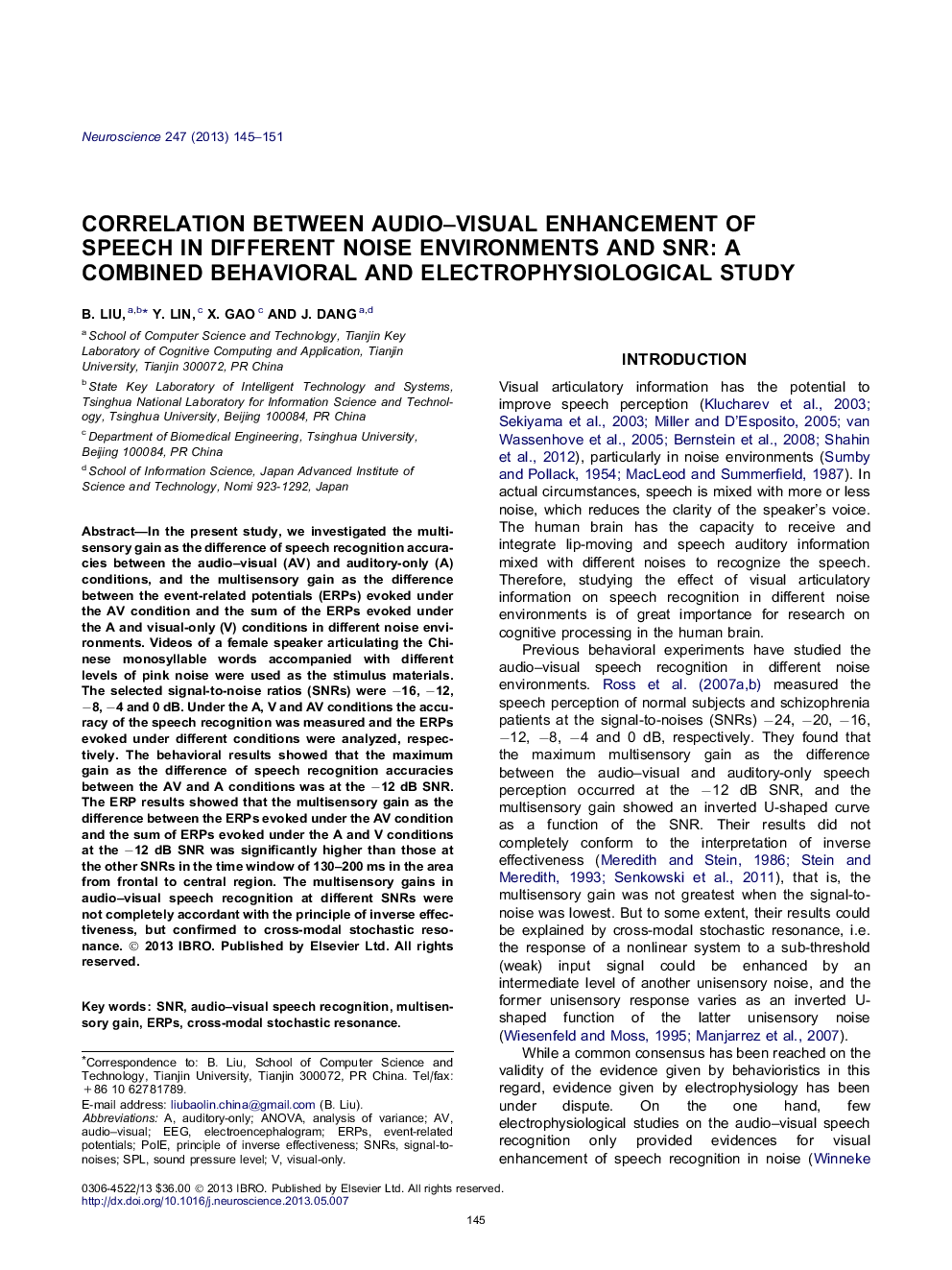| کد مقاله | کد نشریه | سال انتشار | مقاله انگلیسی | نسخه تمام متن |
|---|---|---|---|---|
| 6274805 | 1614829 | 2013 | 7 صفحه PDF | دانلود رایگان |

- The maximum gain as difference of speech recognition accuracies occurs at the â12 dB SNR.
- The maximum gain as difference of ERPs (AV â (A + V)) occurs at the â12 dB SNR.
- The nonlinear multisensory gain varies as an inverted U-shaped function of SNRs.
- The multisensory gain at different SNRs confirmed to cross-modal stochastic resonance.
In the present study, we investigated the multisensory gain as the difference of speech recognition accuracies between the audio-visual (AV) and auditory-only (A) conditions, and the multisensory gain as the difference between the event-related potentials (ERPs) evoked under the AV condition and the sum of the ERPs evoked under the A and visual-only (V) conditions in different noise environments. Videos of a female speaker articulating the Chinese monosyllable words accompanied with different levels of pink noise were used as the stimulus materials. The selected signal-to-noise ratios (SNRs) were â16, â12, â8, â4 and 0 dB. Under the A, V and AV conditions the accuracy of the speech recognition was measured and the ERPs evoked under different conditions were analyzed, respectively. The behavioral results showed that the maximum gain as the difference of speech recognition accuracies between the AV and A conditions was at the â12 dB SNR. The ERP results showed that the multisensory gain as the difference between the ERPs evoked under the AV condition and the sum of ERPs evoked under the A and V conditions at the â12 dB SNR was significantly higher than those at the other SNRs in the time window of 130-200Â ms in the area from frontal to central region. The multisensory gains in audio-visual speech recognition at different SNRs were not completely accordant with the principle of inverse effectiveness, but confirmed to cross-modal stochastic resonance.
Journal: Neuroscience - Volume 247, 5 September 2013, Pages 145-151